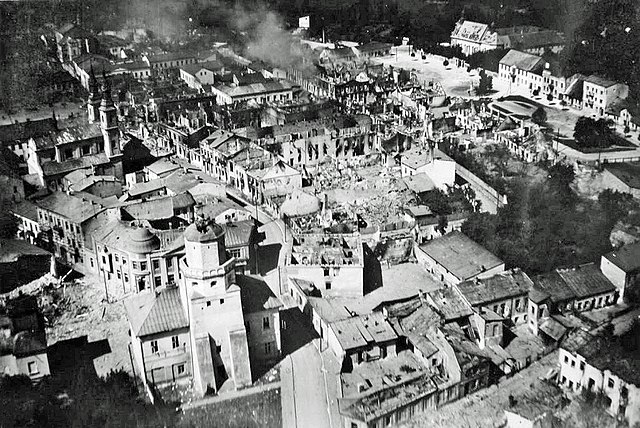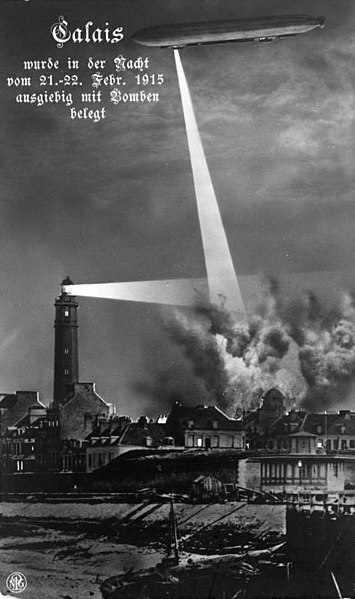Strategic bombing during World War II
World War II (1939–1945) involved sustained strategic bombing of railways, harbours, cities, workers' and civilian housing, and industrial districts in enemy territory. Strategic bombing as a military strategy is distinct both from close air support of ground forces and from tactical air power. During World War II, many military strategists of air power believed that air forces could win major victories by attacking industrial and political infrastructure, rather than purely military targets. Strategic bombing often involved bombing areas inhabited by civilians, and some campaigns were deliberately designed to target civilian populations in order to terrorize them and disrupt their usual activities. International law at the outset of World War II did not specifically forbid the aerial bombardment of cities – despite the prior occurrence of such bombing during World War I (1914–1918), the Spanish Civil War (1936–1939), and the Second Sino-Japanese War (1937–1945).

A B-24 on a bomb run over the Astra Romana refinery in Ploiești, Romania, during Operation Tidal Wave
Bombing of Wieluń, the first Polish city destroyed by Luftwaffe bombing, on 1 September 1939. In one of the first acts of World War II, German bombers destroyed 70%[citation needed] of all the buildings, including a clearly marked hospital and church, killing approximately 127[citation needed] civilians.
Polish mothers with their newborn infants in a makeshift maternity ward inside a hospital basement during the Bombing of Warsaw by the German Luftwaffe
Warsaw burning after a German bombing of the city. The Luftwaffe air campaign resulted in the deaths of an estimated 20,000 – 25,000 civilians.
Strategic bombing is a systematically organized and executed attack from the air which can utilize strategic bombers, long- or medium-range missiles, or nuclear-armed fighter-bomber aircraft to attack targets deemed vital to the enemy's war-making capability. It is a military strategy used in total war with the goal of defeating the enemy by destroying its morale, its economic ability to produce and transport materiel to the theatres of military operations, or both. The term terror bombing is used to describe the strategic bombing of civilian targets without military value, in the hope of damaging an enemy's morale.
Tokyo after the massive firebombing attack on the night of March 9–10, 1945, the single most destructive raid in military aviation history. The Tokyo firebombing cut the city's industrial productivity by half and killed around 100,000 civilians.
A 1918 Air Raid rehearsal, evacuating children from a hospital.
German airship bombing Calais on the night of 21–22 February 1915
Ruins of Guernica (1937)








